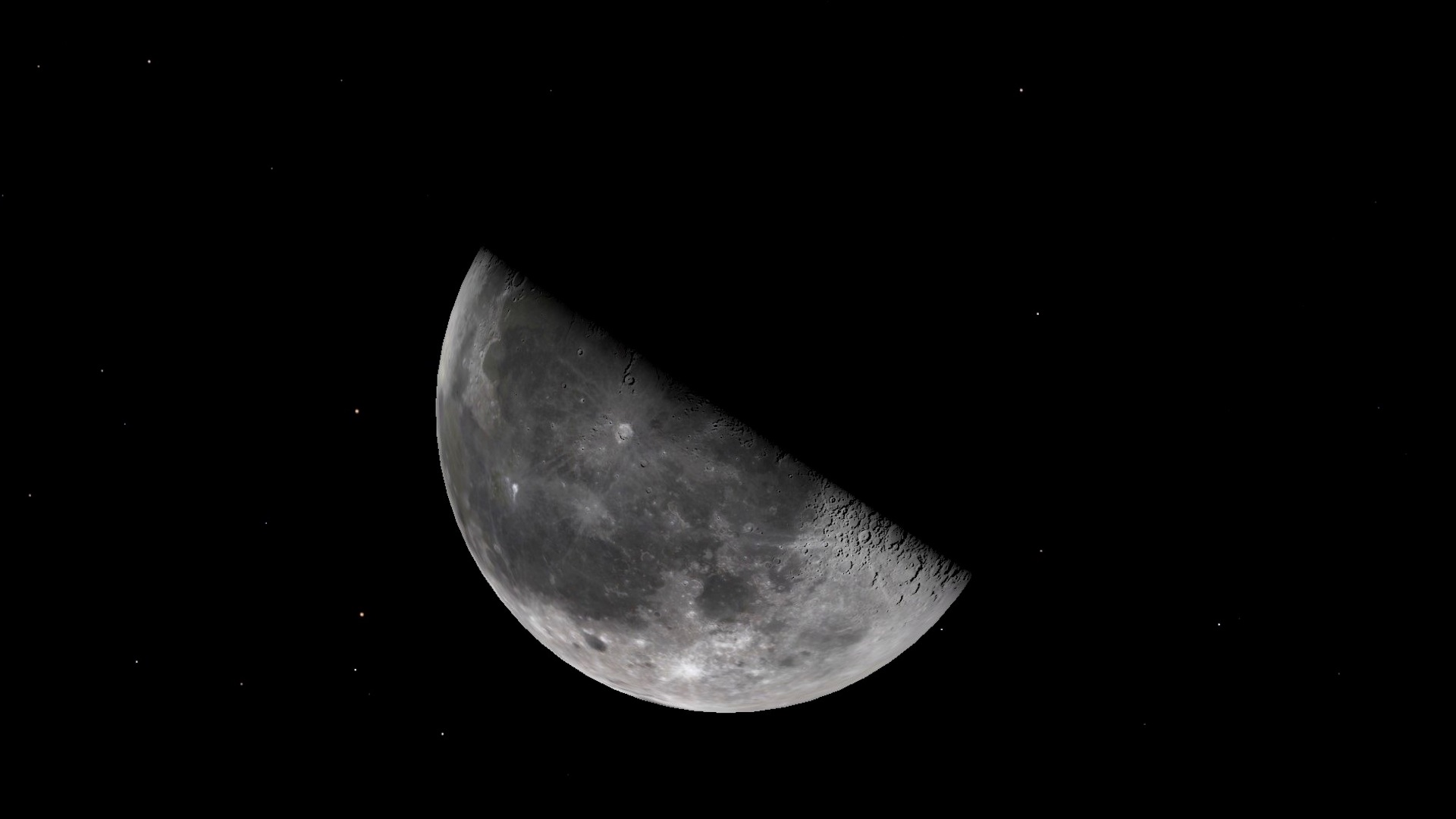See the final last quarter moon of 2022 rise tonight (Dec. 16)
The lunar face will be half-illuminated for the last time this year.

On Friday (Dec. 16), the moon will enter its last quarter phase for the final time in 2022 with the lunar disk exactly half-illuminated.
As seen from New York City, 2022's final last quarter moon will rise seven degrees above the horizon to the east at around 12:21 a.m. EST (0521 GMT), according to In the Sky. It will reach its highest point in the sky, 55 degrees above the southern horizon at around 6:00 a.m. EST (1100 GMT) before disappearing in the light of dawn less than an hour later around 6:52 a.m. EST (1152 GMT).
This won't be the last time the moon will appear half-illuminated by the sun during 2022. The lunar face will be half-lit again during the final first quarter moon of the year which happens on Dec. 30.
Related: Full moon calendar 2022: When to see the next full moon
These phases of the moon get their name not from the proportion of the moon illuminated, but by the time at which they occur during the 29.5-day lunar cycle.
The first quarter moon falls a quarter of the way through this cycle exactly halfway between the completely dark new moon, the beginning of the lunar cycle and the completely illuminated full moon, which marks the halfway point of the lunar cycle.
The last quarter moon, on the other hand, happens when the lunar cycle is three-quarters of the way through, falling between the full moon and the next new moon, and thus the start of the next lunar cycle.
Get the Space.com Newsletter
Breaking space news, the latest updates on rocket launches, skywatching events and more!

Between the full moon and the last quarter moon, the illuminated side of the moon has been receding, or 'waning' as astronomers describe it, and this will continue until the new moon. In addition to this, the moon has been rising later and later each day and becoming visible for progressively less time before sunrise. Its peak height in the sky also gets progressively lower each night.

Want to get a better look at the last quarter moon? We recommend the Celestron Astro Fi 102as the top pick in our best beginner's telescope guide. Don't forget a moon filter if you'll be looking towards our celestial companion.
At the last quarter, the moon rises in the middle of the night. Its peak height occurs around dawn before it sets around midday. This culminates by the time of the next new moon, which occurs on Dec. 23, when the moon will rise with the sun and set at sunset, making it visible only during the day.
This situation is then reversed leading to the next full moon, January's full Wolf Moon, which occurs on Jan 6. The moon will rise earlier and earlier each night, its illuminated face will grow, described as 'waxing.'
By the time of the first quarter, the times at which the moon rises and sets during the final quarter phase will have reversed. The first quarter moon rises at lunchtime and sets around midnight.
As it progresses to the Wolf Moon, the moon will be visible for more of the night and by the time the first full moon of 2023 arrives on Jan. 6, our celestial companion will be visible for most of the night.
The moon is a great target for trying your hand at lunar photography or skywatching. Whether you're new to skywatching or have been it at for years, be sure not to miss our guides for the best binoculars and the best telescopes to view the final last quarter moon of 2022 and other sky sites. For capturing the best lunar images you can, we have a guide on how to photograph the moon as well as recommendations for the best cameras for astrophotography and best lenses for astrophotography.
Editor's Note: If you get a good photo of the last quarter moon and would like to share it with Space.com's readers, send your photo(s), comments, and your name and location to spacephotos@space.com.
Follow us on Twitter @Spacedotcom or on Facebook.
Join our Space Forums to keep talking space on the latest missions, night sky and more! And if you have a news tip, correction or comment, let us know at: community@space.com.

Robert Lea is a science journalist in the U.K. whose articles have been published in Physics World, New Scientist, Astronomy Magazine, All About Space, Newsweek and ZME Science. He also writes about science communication for Elsevier and the European Journal of Physics. Rob holds a bachelor of science degree in physics and astronomy from the U.K.’s Open University. Follow him on Twitter @sciencef1rst.









